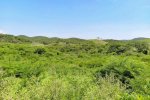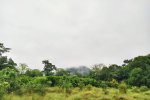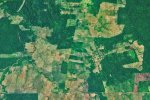
Project
Drought resilience of tropical forests
In the Tropics, droughts will increase in intensity and frequency in the future. Nevertheless, how tropical forests will respond to such disturbances remains uncertain. Understanding the drivers and mechanisms of drought resilience is crucial to foresee the dynamics of these forests and to design climate-smart forest management strategies.
Tropical forests play an essential role in global biodiversity conservation and climate change mitigation. Besides, 1.2–1.5 billion people rely directly on them either because they live in there, or they make their living on tropical forest-based activities. Thus, tropical forest conservation is imperative. Nonetheless, they are exposed to substantial land-use pressures. Over half of the world’s tropical forests are secondary forests recovering from disturbances such as logging, cultivation, ranching, or wildfires. Also, large-scale natural disturbances, such as droughts, affect both old-growth forests and secondary forests. Droughts are becoming more intense and frequent in the Tropics. Worryingly, our understanding of drought effects on tropical forests is limited and almost non-existent for secondary forests. Hence, the current research project focuses on the drought resilience of tropical forests, which is the ability of such forests to withstand and recover from droughts.
Tropical forests cover 17 million km² wolrdwide and grow in environmentally very different areas. The most significant contrast they are subject to are rainfall regimes, as they lead to (at least) two strikingly different biomes: dry and wet tropical forests. These forests not only differ in their appearance but also in their structure, biodiversity, and ecosystem functioning (SBEF). On a smaller scale, disturbance regimes generate differences between forest stands. Even within an environmentally-homogeneous area, land use (for instance, for cattle ranching or cultivation) generates a mosaic of forest patches that also strikingly differ in their SBEF. Thus, climate and disturbance generate a gradient of conditions that drive the SBEF of tropical forests. SBEF seems to determine how forests cope with droughts. Therefore, drought resilience is likely to differ within this so-called climate-successional gradient.
In order to gain a general vision of how SBEF relates to drought resilience, it is mandatory to study drought resilience in as many climatic-successional conditions as possible. This project will take advantage of two of the most extensive datasets of dry and wet tropical forest dynamics available up to date (dry: Nizanda; wet: Chajul; both in southern Mexico). This information will allow us to determine what a drought is for each of these systems, how forests do when they face drought, and what are the mechanisms involved in drought-coping strategies. The project will look into the last 20 years of forest dynamics and will provide insight into how forests will behave in the coming years in the face of a changing environment.
This research is part of the following Frameworks:
- PANTROP - Biodiversity and recovery of forest in tropical landscapes (WUR, Netherlands)
- Rainfall, functional composition and landscape effects on the resilience of tropical dry forests (UNAM, Mexico)
Publications
-
Lithological substrates influence tropical dry forest structure, diversity, and composition, but not its dynamics
Frontiers in Forests and Global Change (2023), Volume: 6 - ISSN 2624-893X -
Autogenic regulation and resilience in tropical dry forest
Journal of Ecology (2021), Volume: 109, Issue: 9 - ISSN 0022-0477 - p. 3295-3307.



